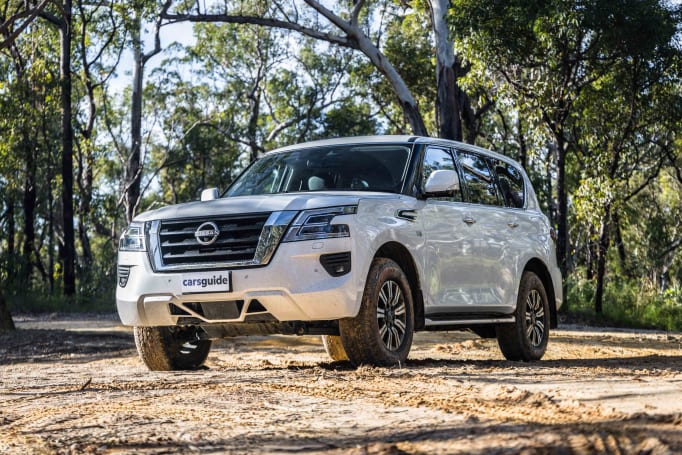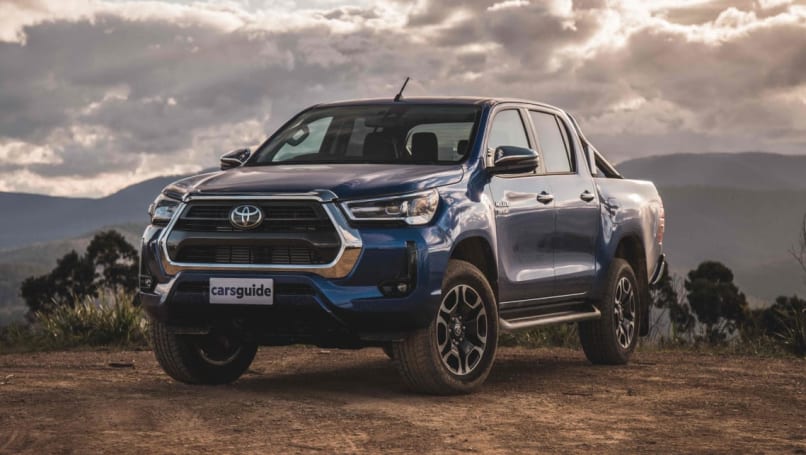
How much does it cost to replace a windscreen?
This used to be a simple question since most car windscreens were made from the...
Browse over 9,000 car reviews
.jpg)
Towing capacity, as the name suggests is the maximum mass of a trailer and its load that can be legally towed on the road by a particular make and model.
In Australia, there will usually be two towing limits listed for a car or ute, and those will be the braked and unbraked towing limit. The braked limit will usually be a lot higher than the unbraked limit, as a braked trailer contributes to the braking performance of the combination (the tow vehicle and the trailer).
These days, many dual-cab utes are capable of legally towing 3500kg on a braked trailer, and that figure has become some kind of default setting for those buying tow-vehicles.
This figure is much higher than in previous generations of cars and reflects the fact that cars are stronger and heavier than ever before (particularly the kinds of vehicles people choose to tow with) and that many vehicles have more powerful engines than ever before.
Knowing your car’s towing limit is important because it means you can stay on the right side of the law when towing a load. Attempting to tow more than the manufacturer’s limit means you are technically unroadworthy.
There are also insurance ramifications here should the worst happen and you’re involved in a crash. Even going beyond the towing limit off-road (say, on a farm) can mean that your car’s warranty will be affected.

And beyond all those things is the fact that attempting to tow too heavy a load can easily damage your vehicle and will also make it unsafe in terms of its braking and handling.
Unfortunately, the towing limit is a bit misleading as it’s not the only number you need to consider to stay legal and safe. The other important number is the vehicle’s GCM or Gross Combination Mass.
This is the total weight of the car and its towed load, including all passengers, fuel and luggage on board.
The catch is that some dual-cab utes (for example) might have a GCM of 5800kg and a towing limit of 3500kg, but once you hook that full amount to the tow-bar of the 2000kg ute, you discover that you have only 300kg of weight left for you, your passengers and your luggage. Exceeding the GCM is just as dangerous and illegal as exceeding the towing limit.
The other trap for the unwary is exceeding the towball downweight limit. This is set by the manufacturer and is usually a maximum of 10 per cent of the total mass being trailered. Exceed this figure and you’ll be illegal and unroadworthy.
The first consideration in choosing a tow vehicle is that it has the legal capacity to tow what you need to move. And that’s where the 3500kg thing has become a baseline number as it allows most people plenty of headroom.

Beyond that, you need to choose a vehicle that will do everything else you’ll ask of it, as well as making the towing tasks as relaxed and safe as possible.
While it’s true that many dual-cab utes have this theoretical 3.5-tonne towing ability, some definitely do it better than others. A turbo-diesel engine is a big plus (and petrol powerplants are almost history in this market segment, but they do crop up).
Such an engine will give you the torque and flexibility you need, and it’s worth mentioning that some turbo-diesels are beefier than others.
Some are okay up to about half that 3.5-tonne limit, but beyond they some of them can struggle, particularly on hills and in terms of their fuel consumption (not that fuel use is anywhere near the top of mind for most towing-rig owners).
We’d also plump for an automatic transmission for towing. That is, a conventional automatic, not a dual-clutch or a CVT unit, as a traditional auto is simply stronger for longer when you use them hard.
An auto makes manoeuvring easier and the auto gives a smoother take-up of the load and less wear and tear.

The third consideration is the actual construction of the vehicle. While more modern, monocoque body designs can be lighter and handle better, for towing, the traditional body-on-frame construction is still hard to beat.
The vast majority of dual-cab utes feature this, as do the big-hitters of the off-road wagon world such as the Nissan Patrol and Toyota's LandCruiser and Prado.
Having established that it’s utes and four-wheel drives that are your best bet of a realistic 3500kg towing performance, what cars can tow 3500kg that we would recommend?
It’s not a simple question, because there are plenty that theoretically can, including unlikely candidates such as the Bentley Bentayga and the Porsche Cayenne GTS and Turbo in wagon form. Clearly, we’re not talking tow-vehicles for the masses at that point.
So let’s stick with the attainable tow-trucks.
By far the best bet for the serious tower will be a dual-cab ute or off-road SUV. Those vehicles all tend to have the turbo-diesel engines, conventional automatic transmissions and ladder-chassis construction we were talking about.

Beyond that, they also have all-wheel drive which can be a real holiday-saver in the case of a muddy campground or greasy boat-ramp.
And why aren’t there any vans on this list? Because, when it comes to towing 3.5 tonne, vans of that capacity are not really available with most closer to 2000kg towing, or even less.
Same goes for the SUV wagon versions of the dual-cab utes (Toyota Fortuner, Mitsubishi Pajero Sport and others). The switch form leaf to coil rear springs and an independent rear suspension system (for passenger comfort) means most of these lose a few hundred kilos of outright towing limit.
That said, the Isuzu MU-X has a full 3.5kg limit as do V6 turbo-diesel versions of the newest Ford Everest.
Neither have we listed the real big hitters, the US-market utes that have arrived here to cheers lately. Some of these have amazing towing capacities, but they’re too big and too expensive to be on the radar of most people.
There are also plenty of other cars with 3.5-tonne towing capacity, but these ones below are the 3500kg towing capacity vehicles available for sensible money.

A bit long in the tooth, the rugged old Toyota 70 Series is available as a ute or a wagon and also features the much-loved 4.5-litre V8 turbo-diesel. Impressive off-road, too. Priced from $69,000 (if you can find one).

The Y62 Patrol bucks the trend by being a petrol-engined vehicle. But the V8 is smooth and powerful and tows beautifully. Another great off-roader into the bargain. Priced from $95,115.

Known for their toughness and reliability, the Isuzu twins aren’t the last word in refinement or dynamics, but they are good tow-trucks. Full towing capacity restricted to 3.0-litre versions. Priced from: $36,200.

The first choice in dual-cab utes for refinement and dynamics. Lots of options including cab-chassis, two and four-wheel-drive and all able to cope with 3.5 tonnes. V6 turbo-diesel dual-cab is the plum buy, but the Everest SUV is compelling, too. Priced from $35,930.

Great reputation even if DPF woes have hurt that a little lately. Classic dual-cab, four-wheel drive ute layout is proof of concept. Four-wheel drive models carry the big 3.5-tonne towing limit. Priced from $40,155.

All Defender models can tow 3500kg, including the 2.0-litre version. The bigger engined versions are best for the job, however. Not a cheap car any more, either. Priced from $82,960.

The new off-roader everybody’s talking about, the Grenadier uses old-school packaging with BMW drivelines. Petrol or diesel will tow 3500kg. Priced from $85,500.

The much anticipated new Cruiser gets a powerful driveline and superb off-roading ability. But it’s also a tow-master thanks to its sheer size and heft. Priced from $89,181.

More upmarket variants of the Navara have a coil-spring rear-end which has been questioned by some who tow big loads. A process of continual improvement at Nissan has improved things. Huge spread of spec and prices. Priced from $32,300.

By comparison with some of the Japanese makes, the South Korean Musso is a wallet-friendly way into 3500kg towing. Be aware, though, that engine performance in the Musso will be stretched at this limit. Priced from $34,990.










Comments